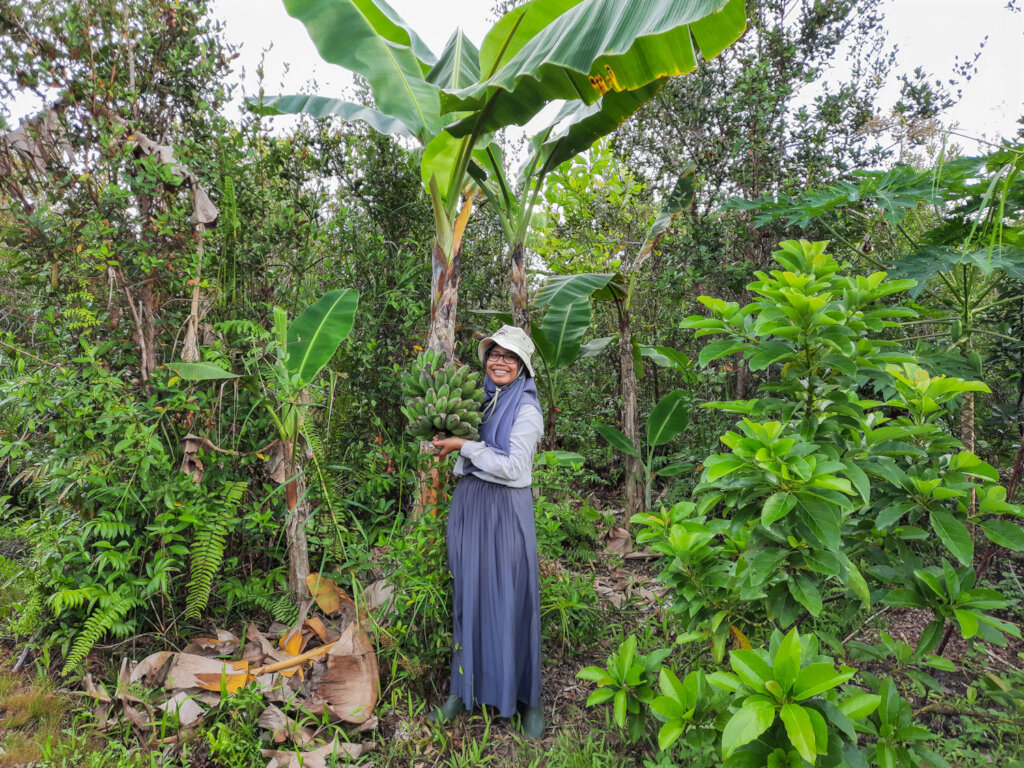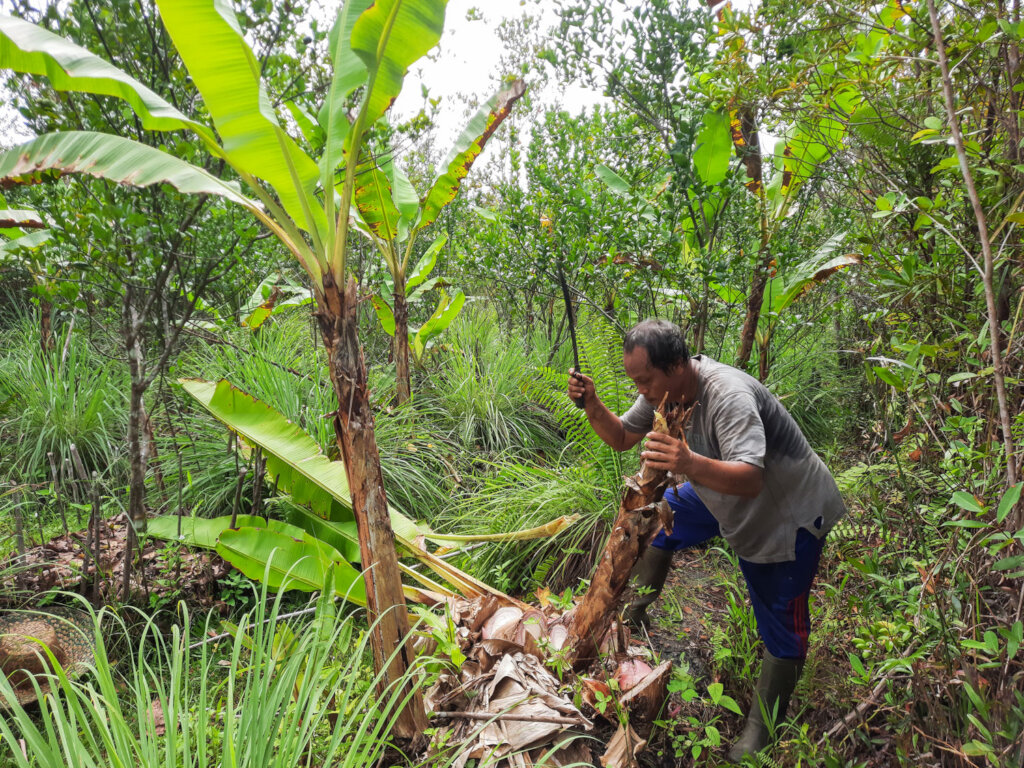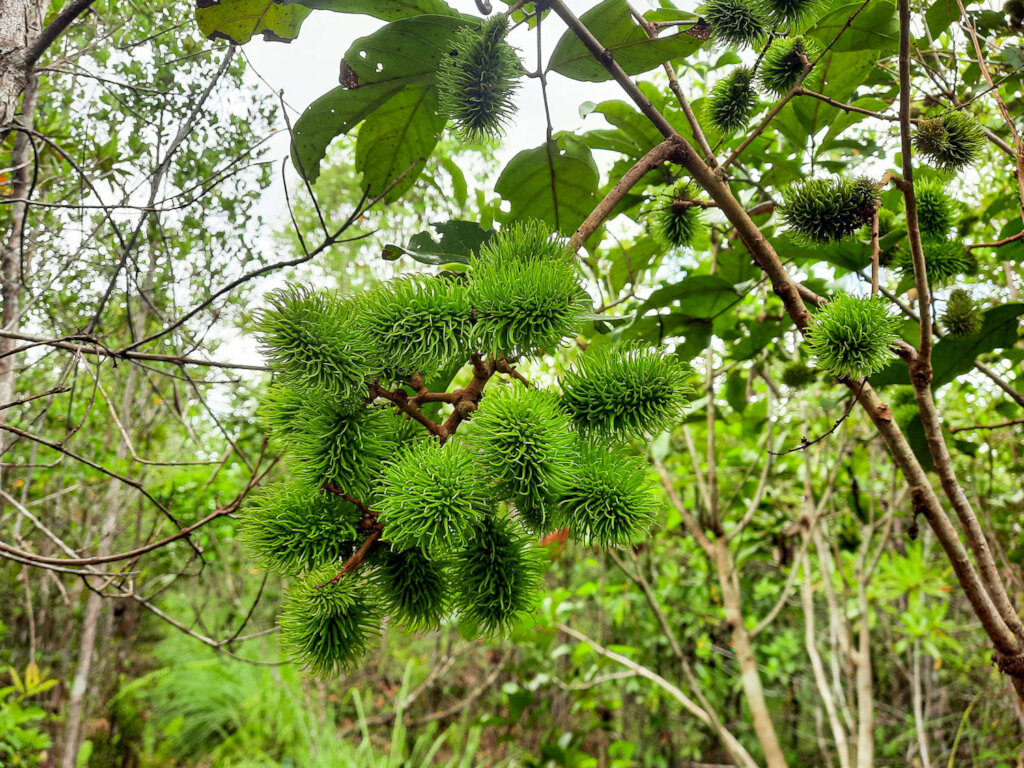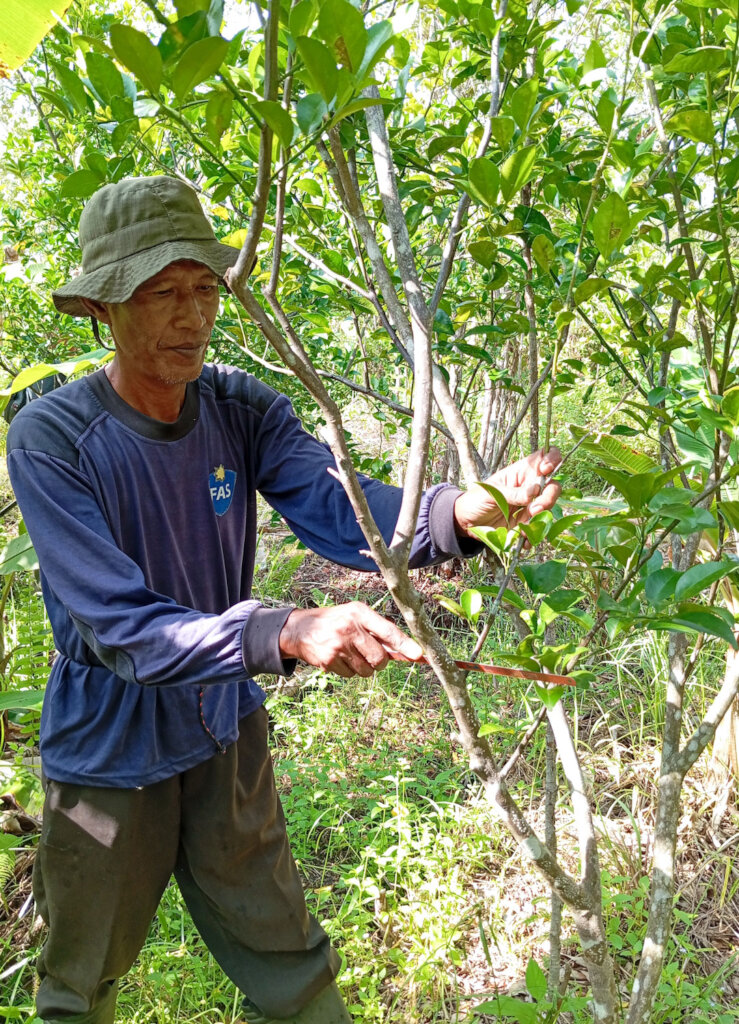By Uttama Pranaya | Fundraising & Communications
Dear friends,
For the past few years since we started the agroforestry model plot, the team on the ground has been working tirelessly to ensure that the agroforestry model is ready to be replicated for smallholder farmers in Central Kalimantan. Recently we sat down with S, one of the staff who has been working on the project diligently since the beginning. Here’s what she has to say about the project so far…
1. Can you tell us why the majority of farmers in the area choose to practice monoculture farming on their land, and what impact it has on the environment?
In Bukit Batu, Central Kalimantan, monoculture farming is prevalent among vegetable farmers due to long-standing habits. While this method simplifies cultivation and boosts yields, monoculture farming methods reduce biodiversity, making the land more susceptible to pests and diseases, making it necessary for the use of chemical pesticides. The use of chemicals over the years will adversely impact the environment.
Furthermore, this farming practice not only harms the ecosystem but also diminishes soil fertility, compromising the quality of produce for human consumption. Addressing these issues requires promoting crop diversification and implementing eco-friendly farming techniques for a more sustainable agricultural approach.
2. We know that within the agroforestry model, we find an increased variety of plants and this creates a cooler and greener landscape. What are the benefits of these cooler conditions to the environment, and how can this benefit farmers in the area?
The cooler temperature on the land enhances the working conditions for farmers, allowing them to extend their work hours and focus more on plant care. Additionally, the cool environment helps maintain water reserves in the soil and plants, preventing soil dehydration and plant wilting that often occurs in hot conditions.
The lush, green landscape with diverse plant life promotes a balanced ecosystem. The abundance of different plants fosters soil fertility by increasing the presence of microorganisms. This enhanced fertility simplifies farming for the local farmers, providing them with more favorable conditions for cultivation. In summary, the diverse agroforestry approach not only benefits the environment by creating a cooler and more beautiful landscape but also supports farmers in optimizing their agricultural activities.
3. Lastly, tell us about the work that has been done for the past couple of years until now, where all the plants in the agroforestry plot can grow by themselves.
So far, we have strategically designed planting patterns to ensure optimal sunlight for all plants while preserving native trees to uphold biodiversity. We've implemented long beds and trenches to address the issue of excessive moisture, and in order to enhance soil conditions, we've applied lime to adjust pH levels.
To increase soil fertility, and thus help plant growth, our approach includes the use of organic fertilizers such as chicken and cow manure, along with regular adherence to "Best Practices" like Biochar, MOL (local micro organisms), Eco Enzyme, Wood Vinegar, Trichoderma, Azolla, worms, pruning, and organic mulch which all came from extensive research over at our Research Center.
(end of interview)
Thanks to your support, we've been able to further develop the agroforestry model, tackle the challenges along the way, and create sustainable solutions. We hope to have you on board as we look forward to partnering with smallholder farmers in Central Kalimantan, utilizing agroforestry as a sustainable farming practice and pave our way to a brighter, greener future.
If you haven’t already, please consider turning your donations into monthly giving, which would provide us with a more sustainable source of funds that we can use to expand our services to the smallholder farmers. Thank you once again for your continued support and generosity!
By Uttama Pranaya | Fundraising & Communications
By Uttama Pranaya | Fundraising & Communications
Project reports on GlobalGiving are posted directly to globalgiving.org by Project Leaders as they are completed, generally every 3-4 months. To protect the integrity of these documents, GlobalGiving does not alter them; therefore you may find some language or formatting issues.
If you donate to this project or have donated to this project, you can receive an email when this project posts a report. You can also subscribe for reports without donating.
Support this important cause by creating a personalized fundraising page.
Start a Fundraiser


